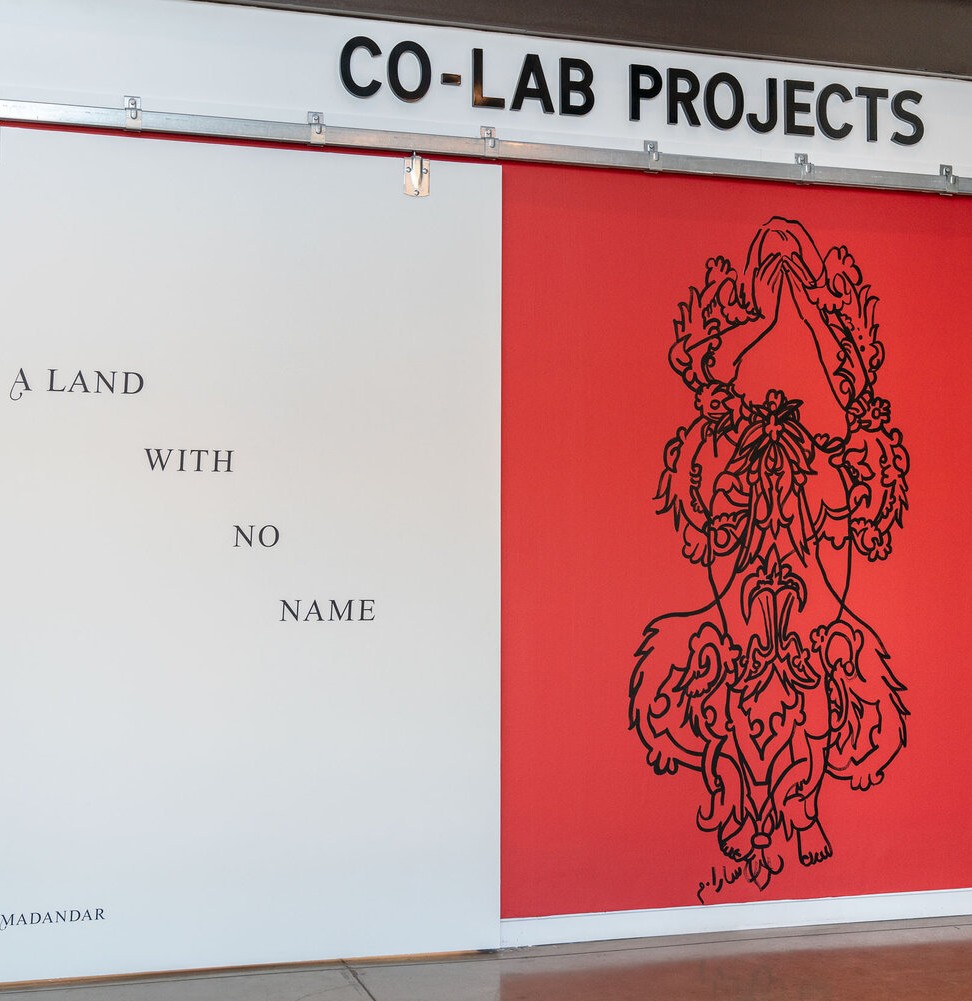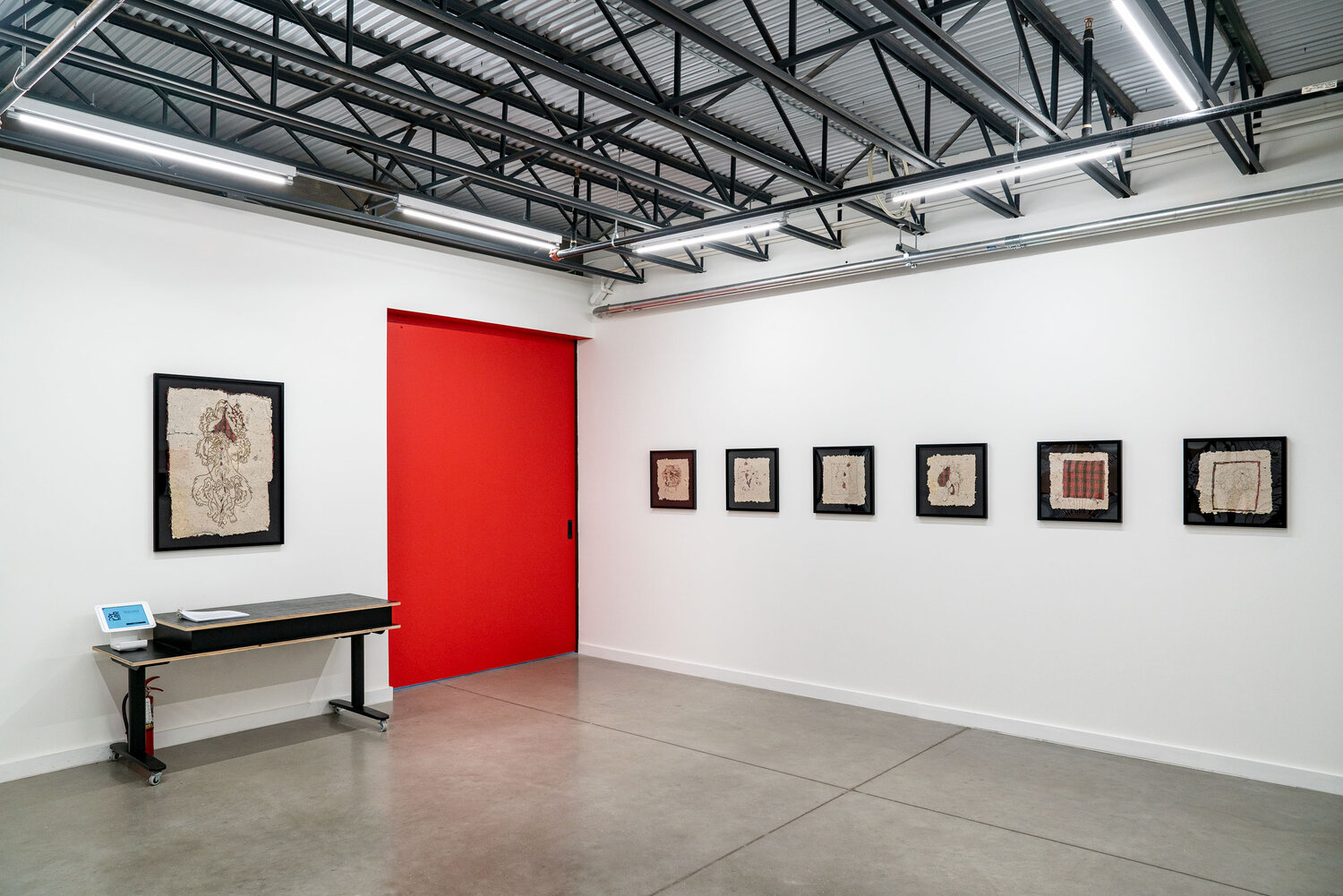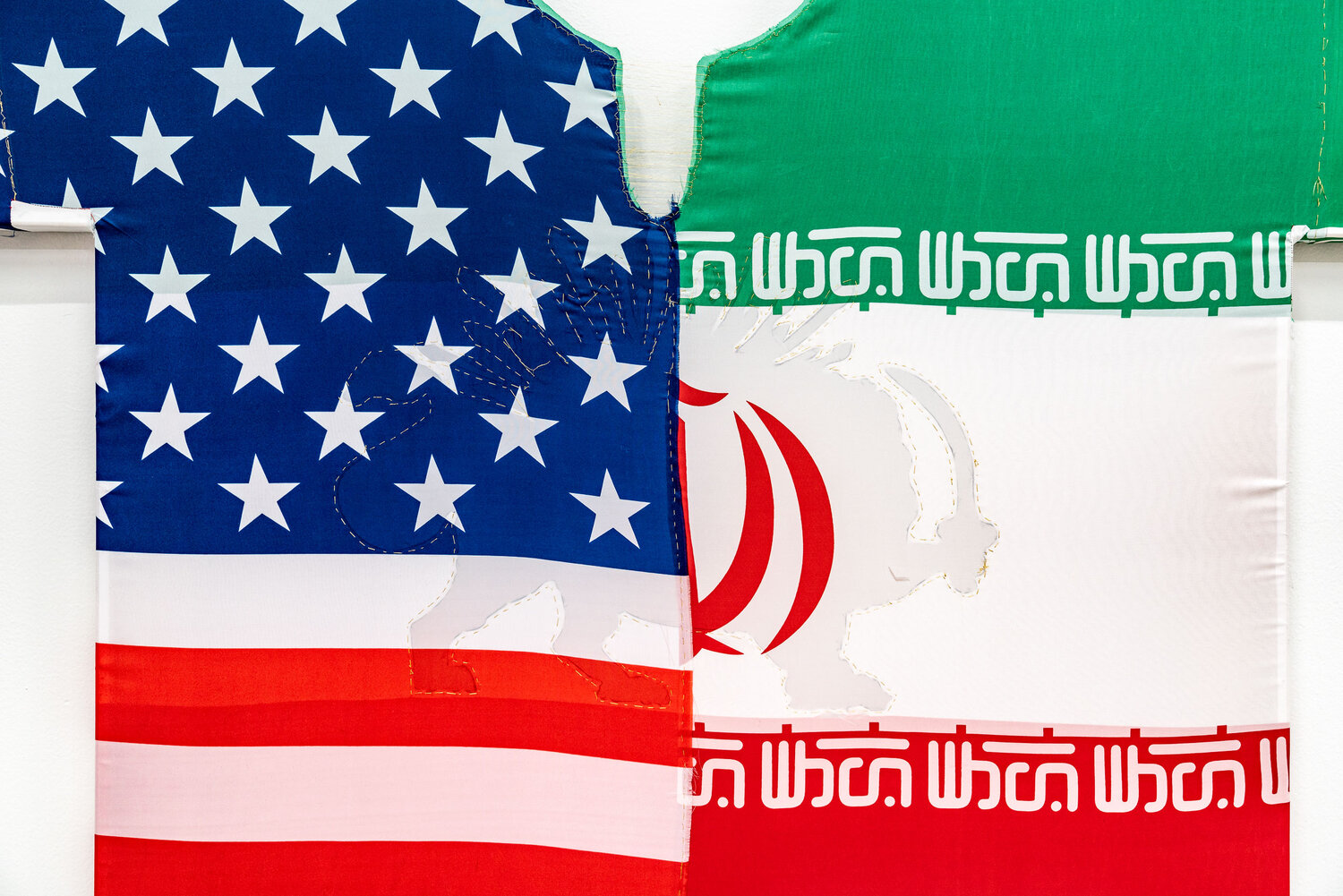Texas,
1023 Springdale Road, Suite 1BAustin, 78721, UAS
15 October 2019 - 26 October 2019
A Land with No Name is a series that takes its inspiration from Persian history–in particular, how complex notions of gender and national identity changed in Iran between the 19th and 20th centuries. Afsaneh Najmabadi’s book Women with Mustaches and Men without Beards explores how, during the 19th centuries Qajar dynasty, Iran’s national identity was ambiguously gendered. This was a time in which women with mustaches were considered attractive and the emblem on the nation’s flag was a female lion. As the nation “modernized” into the 20th century, many of its symbols of national identity transitioned to more masculine forms–even the flag’s lioness was changed to a lion.
Exploring these historical transitions, A Land with No Name uses paintings to break down and reconfigure how we think of place, nation, identity, and gender. In this series, these transformations are represented by breaking down the canvas. In some paintings it is shredded and cut, in others burned and etched with a laser cutter. The destruction and remaking of materials have long been a key component of my artistic practice. The hand-made paper in this series is recycled from 2017 editions of the New York Times featuring headlines about Trump’s “Muslim ban.” Literally dissolving the news through this papermaking process reflects our current political reality—each new day brings dramatic news, however, the impact of these profound political events is quickly forgotten, making way for the next wave of increasingly shocking news.
Having moved from Iran to Texas for graduate school then again to New Orleans, my life has been one of major cultural transitions. Navigating through these cultures has caused me to reflect on the identity of place and ask how do we define a land? What do its borders mean? How do we change as we migrate across them? Recent geopolitical events have had a direct effect on my ability to move between cultures and has caused me to consider these questions. For instance—due to the Trump administration’s “Muslim ban” and withdrawal from the Iran nuclear deal my family is no longer able to visit me. From within this turmoil of these questions and circumstances I started imagining a free land, one with no names, borders, or flags. The land I imagine takes the shape of a woman’s body, my body, becoming my homeland. I imagined myself saying "I am from my own body, it is A Land with No Name.”
Exploring these historical transitions, A Land with No Name uses paintings to break down and reconfigure how we think of place, nation, identity, and gender. In this series, these transformations are represented by breaking down the canvas. In some paintings it is shredded and cut, in others burned and etched with a laser cutter. The destruction and remaking of materials have long been a key component of my artistic practice. The hand-made paper in this series is recycled from 2017 editions of the New York Times featuring headlines about Trump’s “Muslim ban.” Literally dissolving the news through this papermaking process reflects our current political reality—each new day brings dramatic news, however, the impact of these profound political events is quickly forgotten, making way for the next wave of increasingly shocking news.
Having moved from Iran to Texas for graduate school then again to New Orleans, my life has been one of major cultural transitions. Navigating through these cultures has caused me to reflect on the identity of place and ask how do we define a land? What do its borders mean? How do we change as we migrate across them? Recent geopolitical events have had a direct effect on my ability to move between cultures and has caused me to consider these questions. For instance—due to the Trump administration’s “Muslim ban” and withdrawal from the Iran nuclear deal my family is no longer able to visit me. From within this turmoil of these questions and circumstances I started imagining a free land, one with no names, borders, or flags. The land I imagine takes the shape of a woman’s body, my body, becoming my homeland. I imagined myself saying "I am from my own body, it is A Land with No Name.”


